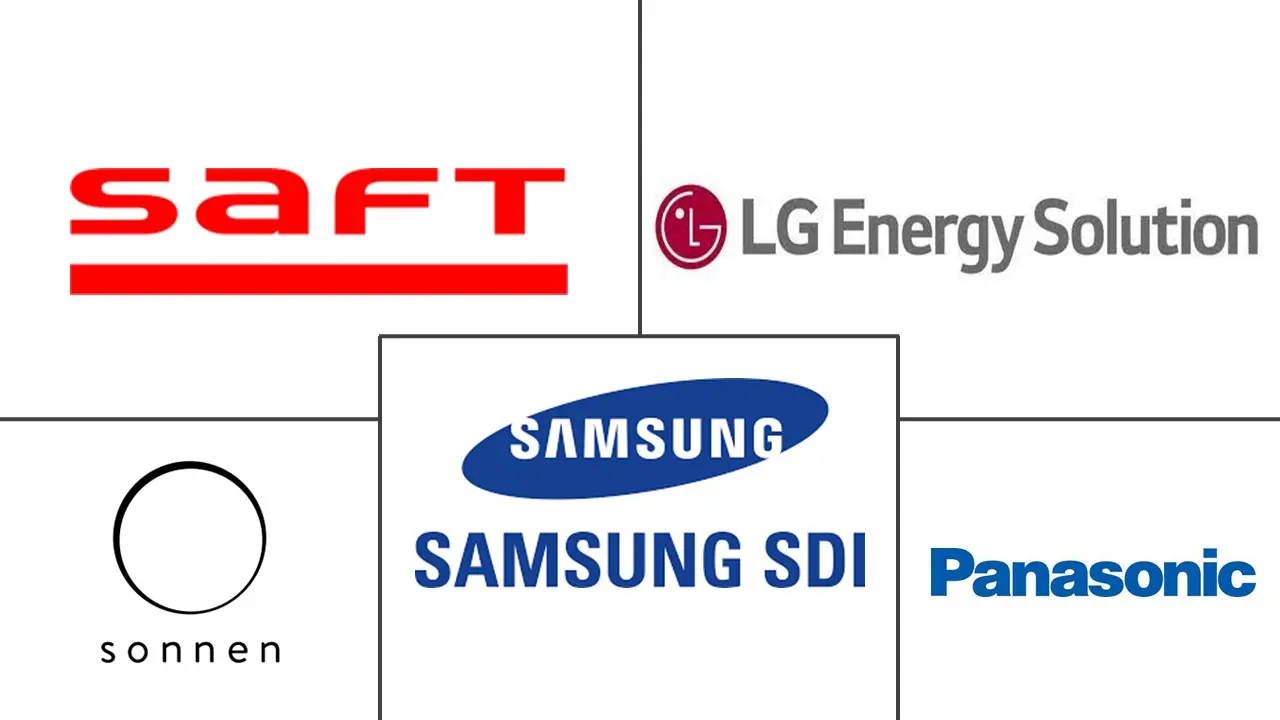Residential Energy Storage Systems Market Size and Share
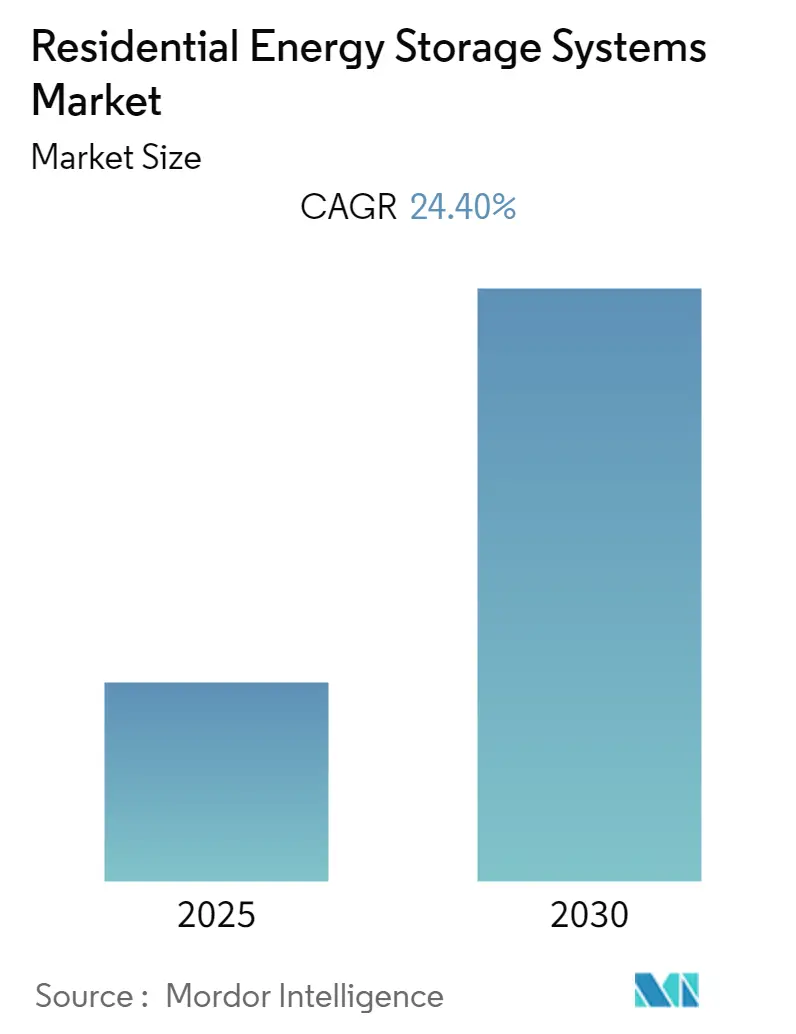
Residential Energy Storage Systems Market Analysis by Mordor Intelligence
The Residential Energy Storage Systems Market is expected to register a CAGR of 24.4% during the forecast period.
The market was negatively impacted by COVID-19 in 2020. Presently the market has now reached pre-pandemic levels.
- Over the medium term, increasing demand for uninterrupted and reliable power supply and the rise in adoption of solar rooftop systems by the residential sector is also expected to drive the growth of the market studied.
- On the other hand, the lack of direct access to metal resources and reserves for battery manufacturing in many countries may negatively impact the market's growth and is one of the major restraints for the market.
- Nevertheless, The residential energy storage systems market is majorly dominated by developed nations such as Germany, the United States, and Australia. However, several other countries, such as Brazil, Saudi Arabia, Thailand, and Bangladesh, have introduced the net metering program and made certain amendments to encourage solar PV in the residential sector, are expected to provide growth opportunities in the forecast period.
- Europe dominates the market and is also likely to witness the highest CAGR during the forecast period. Most of the demand comes from the countries like Germany, the United Kingdom, etc.
Global Residential Energy Storage Systems Market Trends and Insights
Lithium-Ion Battery Technology to Dominate the Market
- Lithium-ion (Li-ion) batteries are nearly 100% efficient in charge and discharge, allowing the same ampere-hours in and out. These batteries offer various technical advantages over other technologies, such as lead-acid batteries. Rechargeable Li-ion batteries, on an average, offer cycles more than 5,000 times, in comparison to lead-acid batteries that last for around 400-500 times.
- Li-ion batteries can be recharged numerous times and are more stable. Further, they tend to have a higher energy density, voltage capacity, and lower self-discharge rate than other rechargeable batteries. This improves power efficiency as a single cell has longer charge retention than different battery types.
- Additionally, Li-ion batteries do not need as frequent maintenance and replacement as the lead acid batteries. Li-ion batteries maintain their voltage throughout the discharge cycle, allowing greater and longer-lasting efficiency of electrical components, whereas the voltage of lead-acid batteries drops consistently throughout the discharge cycle. Despite the higher upfront cost of Li-ion batteries, the true cost is much lesser than that of lead-acid batteries, when considering lifespan and performance.
- Batteries play a crucial part in the energy storage systems and are responsible for major portion of the total cost of system, especially used in residential energy storage systems. The total installed capacity of the renewable energy sources is increasing at a significant rate, worldwide, and so is the installation of solar rooftops on the residential buildings.
- The increase in solar rooftop capacity is likely to foster the increase in the demand for battery energy storage as well. Therefore, the emergence of new energy storage systems (ESS), for residential applications, is expected to boost the demand for lithium-ion battery during the forecast period. Properties of lithium-ion batteries, such as less weight, low charging time, higher number charging cycles, and declining cost, make it preferable for this application.
- In recent times, owing to their declining prices, the lithium-ion batteries gained popularity as battery storage systems of choice for residential solar and home inverters. In 2021, the price of the lithium-ion battery was USD 123/kWh, which declined by 81.58% from USD 668/KWh in 2013.
- The residential energy storage policies till date are quite nascent. However, countries, such as the United States and Germany, through state policy action and regulatory action, are creating opportunities in the local energy storage markets.
- For instance, in June 2021, the United States Department of Energy (D.O.E) announced immediate policy to scale up domestic manufacturing supply chain for advanced battery materials and technologies.
- Therefore, based on the factors mentioned above, lithium-ion battery technology is expected to dominate the global residential energy storage systems market during the forecast period.
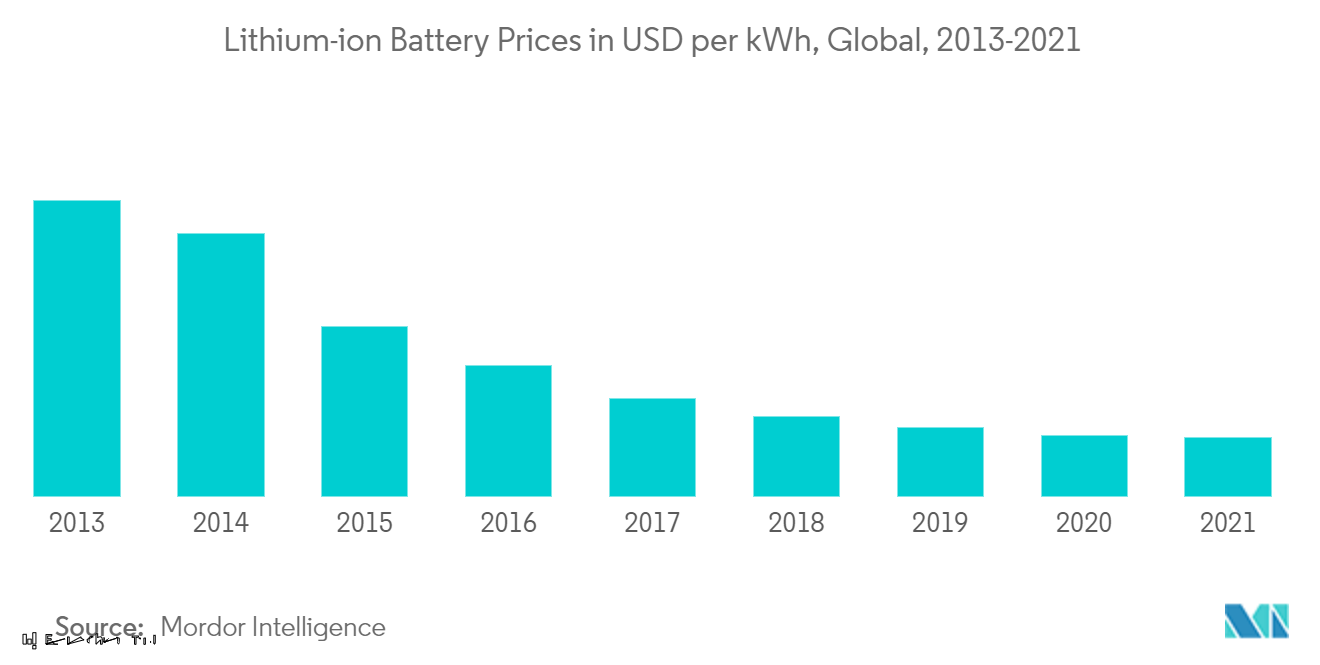
Europe to Dominate the Market
- Europe dominated the RESS market in 2021, and it is expected to continue its dominance in the coming years. The demand for RESS in the region is witnessing high growth due to the rapid adoption of rooftop solar power.
- The residential energy storage systems market has grown rapidly in Germany since 2015, supported by an incentive scheme granting a 30% investment subsidy for the battery system.
- Transformation in Germany's energy mix has been taking place for the past few years. Rooftop solar accounted for a significant share of Germany's total solar energy generation, mainly due to advanced supporting mechanisms introduced in the past, such as grants and loans for roof programs. In 2021, Germany introduced a reform of Renewable Energy Law or EEG 2021, which incorporates the exemption of EEG levy for the owners of PV systems for self-consumption not exceeding 30kW in size. Under the previous rules, this limit was set at 10 kW. This EEG levy is likely to boost the German residential battery market as most residential systems are in the aforementioned range.
- Further, in March 2022, the Institute for Power Electronics and Electrical Drives (ISEA) and RWTH Aachen University found that the home storage systems (HSS) accounted for 93% of the 1,357 MWh of new energy capacity installed in 2021, while the rest 7% includes industrial and large-scale storage segments.
- As of January 2022, the United Kingdom registered 13.79 GW installed solar capacity, and 26% (3.25 GW) of the total capacity has come from solar PV installations below 10 kW, mainly consisting of residential rooftop solar photovoltaic consumers.
- In the United Kingdom, an average resident consumes between 3kWh and 6kWh of energy daily; accordingly, system sizes may vary. One of the most common system capacities installed is a 4-kW system, which is suited to satisfy the energy needs of three-four people. However, a 5kW solar PV system is typical for a home with four-five people, while a 6kW solar panel system is suggested for a home with over five residents. Hence, most residential PV systems have a capacity below 10 kW in the country.
- Moreover, Italy introduced a new super bonus incentive scheme, which gives the possibility of obtaining a tax credit of 110% for the expense from July 2020 until 2023, encouraging energy efficiency interventions. However, to benefit from the super bonus, the PV and the storage system must be installed in conjunction with one of the main interventions. The overall investments made must lead to an improvement of an energy efficiency rating. In case of ineligibility, obtaining the 10-year 50% tax credit already in place for small-scale PV generation assets and BESS is possible.
- The RESS market in the region is also driven by the import of low-cost solar panels from China, helping make photovoltaic technology more competitive.
- Therefore, based on the aforementioned factors, Europe is expected to dominate the global residential energy storage systems market during the forecast period.
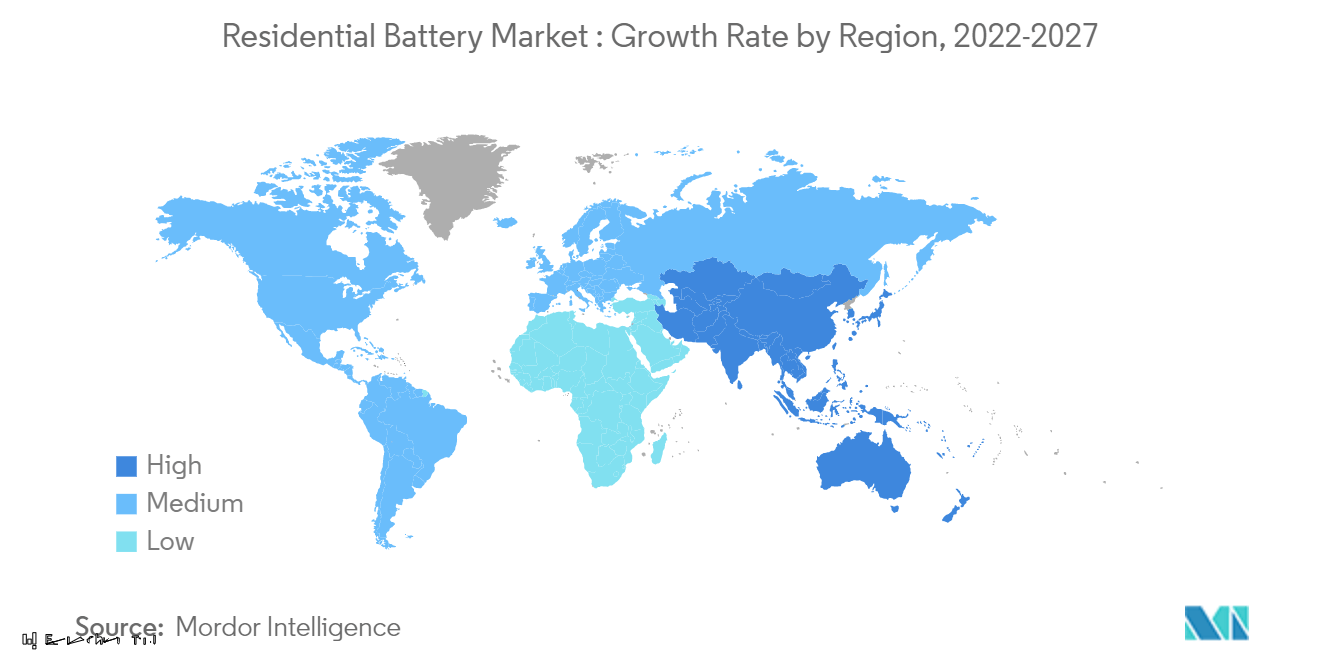
Competitive Landscape
The residential energy storage systems market is fragmented. Some of the major players in this market (in no particular order) include LG Energy Solution Ltd, Samsung SDI Co. Ltd, Panasonic Corporation, Sonnen GmbH, and Saft Groupe SA.
Residential Energy Storage Systems Industry Leaders
-
Samsung SDI Co. Ltd
-
Panasonic Corporation
-
Sonnen GmbH
-
Saft Groupe SA
-
LG Energy Solution Ltd
- *Disclaimer: Major Players sorted in no particular order
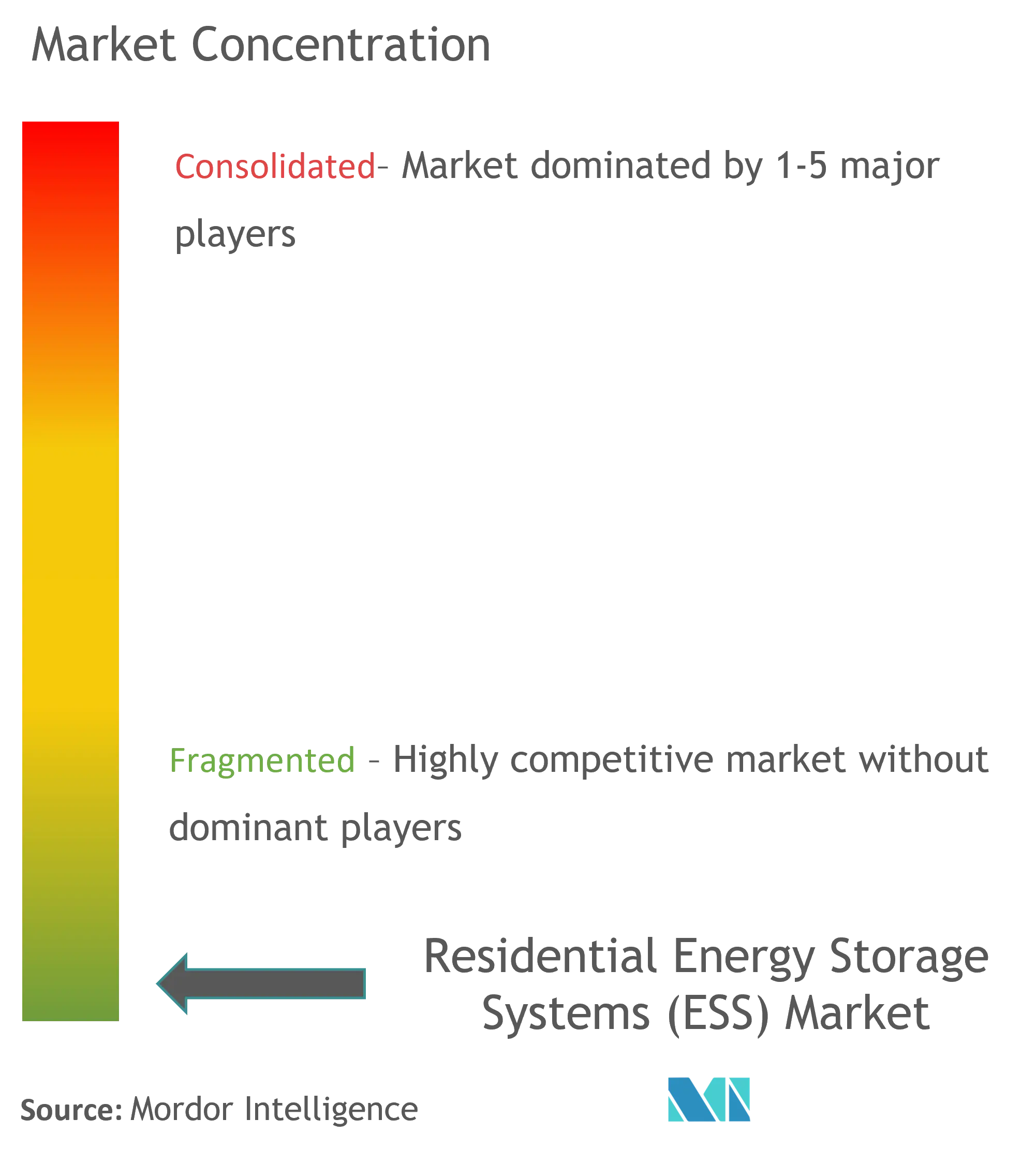
Recent Industry Developments
- May 2022: Mango Power launched Mango Power M Series at the Intersolar Munich 2022. The system can be used with a solar PV, with a 10-20 kWh battery for daily and emergency use. The system supports single and triple-phase connections with 8-14 kW output capability. The system can be used in various applications, including a built-in inverter, backup gateway, and EV charger. The company launched different versions for the United States and Europe markets.
- June 2022: Toyota entered the energy storage market with the launch of the O-Uchi Kyuden System, a residential battery product. Toyota launched a rated output of 5.5 kWh and rated capacity of 8.7 kWh battery storage system, which uses the company's electric vehicle battery technology. When connected to a photovoltaic rooftop system, the system can power a home day and night. Initially, the company aims to sell the storage system in Japan.
Global Residential Energy Storage Systems Market Report Scope
Energy storage is an essential enabler of the energy transition from fossil fuel-based power generation to renewable energy-based power generation. Several developed nations across the globe are shifting from an energy system dominated by centralized fossil fuel generation that can be always dispatched to match energy consumption, to a system with more renewables. The residential energy storage systems market is segmented by type and geography. By type, the market is segmented into lithium-ion batteries, lead-acid batteries, and other technology types. The report also covers the market size and forecasts for residential energy storage systems across the region. For each segment, the market sizing and forecasts have been done based on revenue (USD billion).
| Lithium-ion Batteries |
| Lead-acid Batteries |
| Other Technology Types |
| North America |
| Asia-Pacific |
| Europe |
| Middle-East and Africa |
| South America |
| Technology Type | Lithium-ion Batteries |
| Lead-acid Batteries | |
| Other Technology Types | |
| Geography | North America |
| Asia-Pacific | |
| Europe | |
| Middle-East and Africa | |
| South America |
Key Questions Answered in the Report
What is the current Residential Energy Storage Systems Market size?
The Residential Energy Storage Systems Market is projected to register a CAGR of 24.4% during the forecast period (2025-2030)
Who are the key players in Residential Energy Storage Systems Market?
Samsung SDI Co. Ltd, Panasonic Corporation, Sonnen GmbH, Saft Groupe SA and LG Energy Solution Ltd are the major companies operating in the Residential Energy Storage Systems Market.
Which is the fastest growing region in Residential Energy Storage Systems Market?
Asia-Pacific is estimated to grow at the highest CAGR over the forecast period (2025-2030).
Which region has the biggest share in Residential Energy Storage Systems Market?
In 2025, the Europe accounts for the largest market share in Residential Energy Storage Systems Market.
What years does this Residential Energy Storage Systems Market cover?
The report covers the Residential Energy Storage Systems Market historical market size for years: 2020, 2021, 2022, 2023 and 2024. The report also forecasts the Residential Energy Storage Systems Market size for years: 2025, 2026, 2027, 2028, 2029 and 2030.
Page last updated on:
